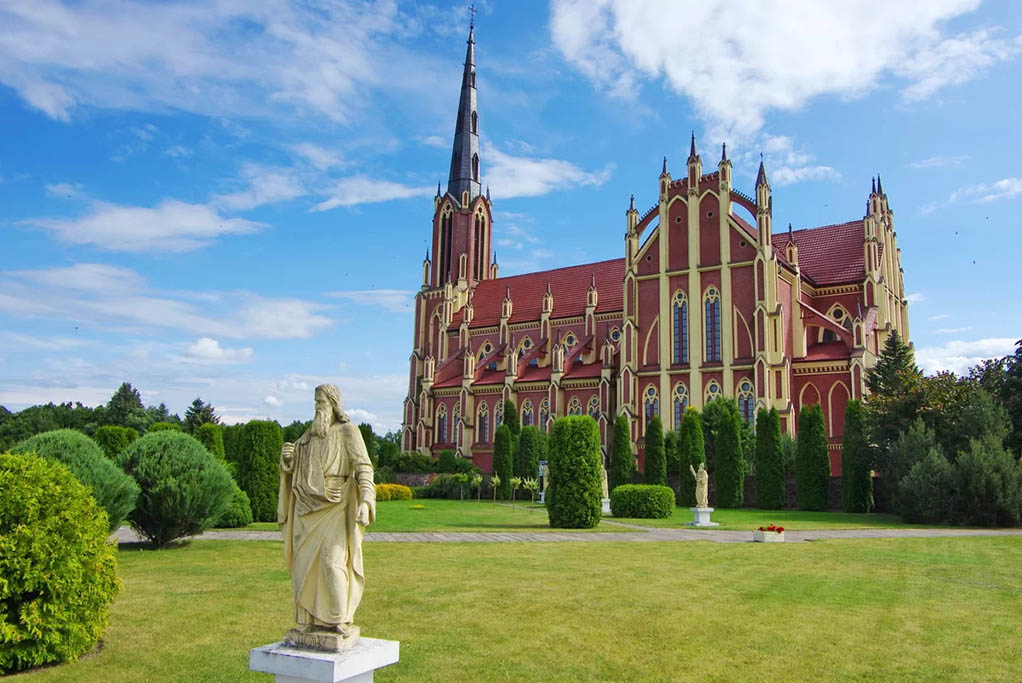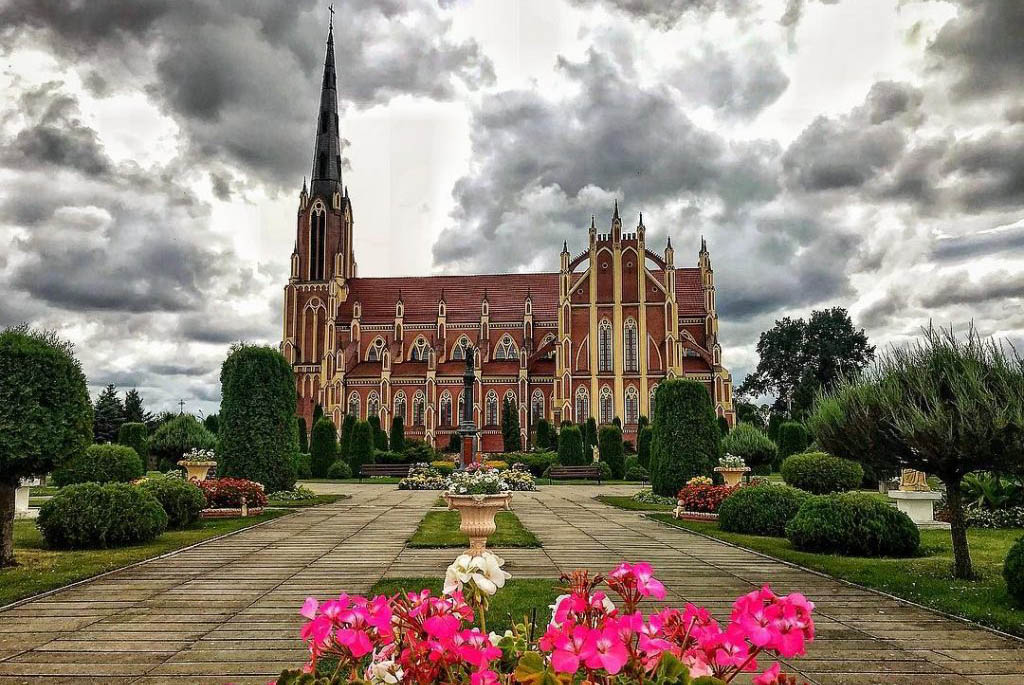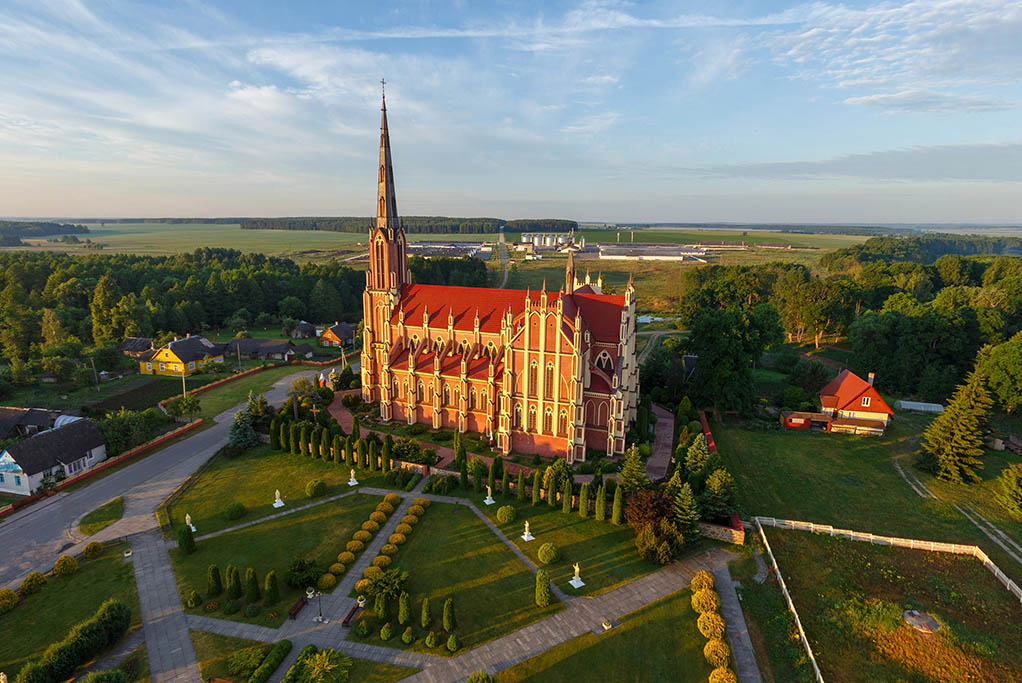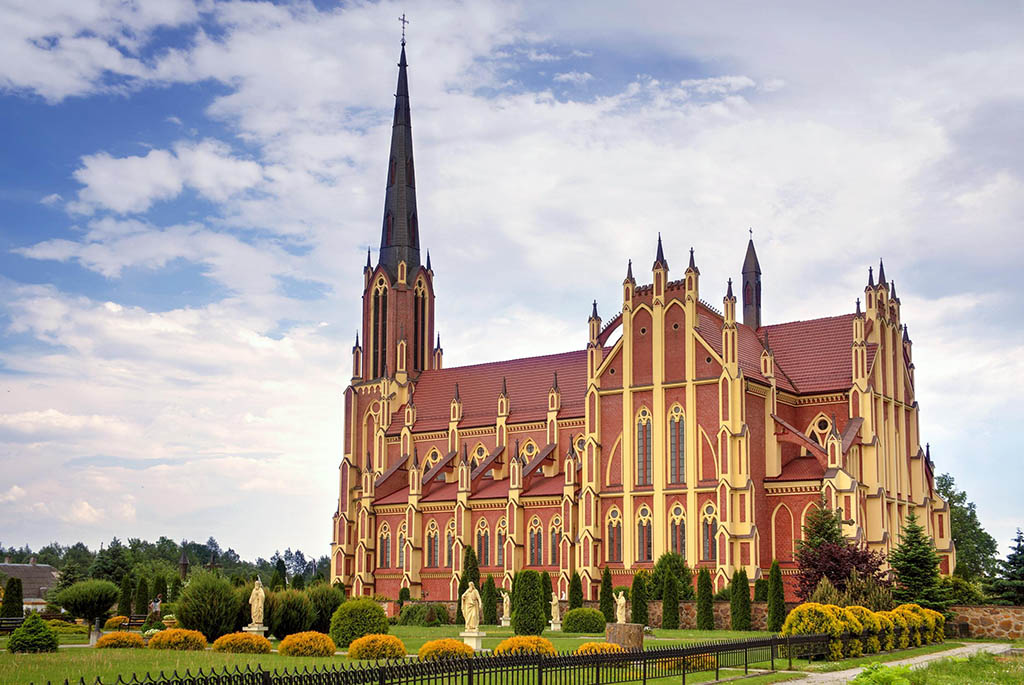Surprisingly, over the years, the church has never significantly suffered from fires, revolutions, or military actions. Although the territory of Gierviaty at the beginning of the last century managed to be part of various states - Middle Lithuania, Poland, and the BSSR. Since its opening, the church has functioned almost without interruption, services were held even in the Soviet years. The only exception was in the 1950s when authorities arrested and exiled the local parish priest, so the temple was closed for a year.
Church Architecture
The church in Gierviaty, built in the form of a cross, is a vivid example of neo-Gothic. For its majesty, loftiness, and impeccable architecture, the Gierviaty church is called the Belarusian Notre-Dame. Architecturally, it is a single-tower, three-nave basilica. A two-tiered bell tower adjoins the nave on the eastern side. The main facade of the building is decorated with large stained glass windows. At the entrance, there are carved wooden crosses typical for Lithuanian temples. Around the church, a picturesque landscape area with well-kept paths, adorned with flowers, rare plants, and shrubs, as well as sculptures of the apostles, has been created.
The interior decoration of the church corresponds to the external elegant style. It is characterized by strict outlines, narrow windows, lancet openings. The restrained interior of the church is not overloaded with decorative elements and ornaments.
The Holy Trinity Church is visited by both local parishioners and numerous tourists who come to Gierviaty to admire the pearl of Belarusian neo-Gothic. Services in the church are conducted in three languages - Polish, Lithuanian, and Belarusian.
5 Interesting Facts about the Church of the Holy Trinity
- The church in Gierviaty is one of the top three tallest temples in Belarus.
- A brick factory was specially built near the village for the construction of the structure, which supplied the material for the building erection.
- No less than 70 people worked daily on the construction.
- For enhancing the strength of the building mixture, raw chicken eggs, collected from local residents, were added.
- Church of the Holy Trinity has astonishing acoustics. Its walls house an antique organ from 1882, made by a Vilnius musical craftsman specifically for the acoustical capabilities of the church. Nowadays, organ music concerts are held here, which are attended by guests from Belarus and abroad.
The most convenient way to get to this peaceful cozy corner of Western Belarus is by car on roads M6 and E28. Alternatively, you can travel by bus, first to Ostrovets and then transferring to Gierviaty. Upon arriving in the agricultural town, do not miss the opportunity to look at the 19th-century water mill - it is within walking distance from the church.





